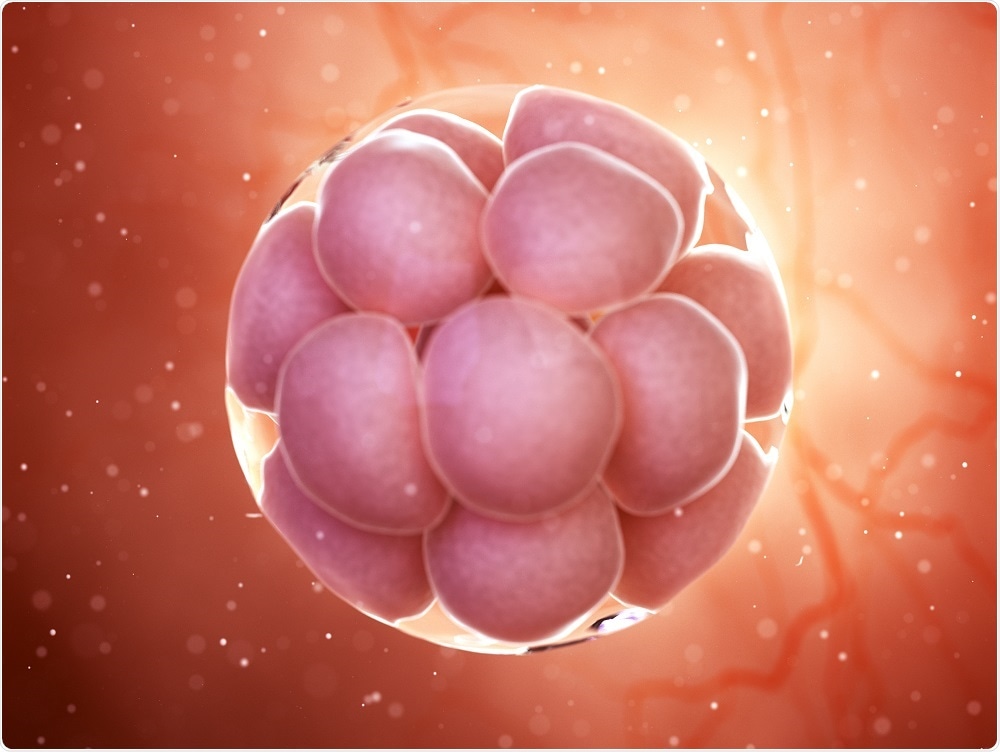
Trump administration cracks down on fetal tissue research
The Trump administration is cutting funding for fetal tissue research, creating new barriers to the projects that doctors and scientists say are vital for life-saving medical research. The move is being denounced by scientists and doctors who say that research using fetal cells is essential for improving our understanding of a range of health threats and developing therapies.
 Sebastian Kaulitzki | Shutterstock
Sebastian Kaulitzki | ShutterstockAnti-abortion groups argue that there are alternatives, such as stem cells, organoids, and tissue that can be taken from newborns while they have heart surgery, for example.
Fetal cells have been used for research since the 1930s and funding has been provided by the government since the 1950s when it was used to develop one of the most important medical advances of the century: the polio vaccine.
What do scientists use fetal tissue for?
Fetal tissue has been used as a source of fetal cells for hundreds of thousands of studies including those that have led to the development of other vaccines and techniques such as in vitro fertilization (IVF).
The cells are also used to study birth defects and a range of diseases including Parkinson’s and Alzheimer’s, HIV, eye diseases and rheumatoid arthritis. Recently, fetal tissue has been key to understanding how the Zika virus moves across the placenta and infects the human brain.
Scientists generally use fetal tissue obtained from elective abortions rather than from miscarriages, since miscarriages are often caused by developmental abnormalities that could render the tissue unfit for research purposes.
Examining both sides
Scientists say fetal cells are superior to adult tissue cells because they are less specialized, can transform into any type of body cell, are easy to grow and quick to replicate. The cells also do not have the same immune response as adult cells, meaning they can be injected into mice to study human diseases without them getting rejected by the immune system.
Pediatric oncologist Elias Zambidis, who conducts research on stem cells at Johns Hopkins says that a ban or strict limitation on fetal tissue research would be "catastrophic."
However, anti-abortion groups argue that alternatives to fetal tissue exist and the National Institutes of Health (NIH) is now providing $20 million for research into these approaches to prove that they work just as well.
Mallory Quigley of the Susan B. Anthony List, which aims to elect anti-abortionists to public office, said in a statement:
Opponents of fetal tissue research suggest alternative approaches such as using monkey or hamster cells to develop vaccines or blood collected from umbilical cords following birth, which would be rich in stem cells. They also point to the use of adult stem cells and organoids – artificially grown masses of cells that mimic an organ.
“Why do we keep focusing on these archaic models when newer, better alternatives are out there?” asks Tara Sander Lee from the Charlotte Lozier Institute, which is against the use of fetal tissue from elective abortion.
She suggests tissue from miscarriages is used as an alternative because it’s from “a natural death, not an intentional killing of the child.”
However, dozens of medical organizations have told the Health and Human Services (HHS) Department that for many diseases or disorders such Zika, Alzheimer’s, HIV, certain eye diseases and spinal cord injury, there are no alternatives that could serve as suitable substitutes for fetal tissue.
The proposed alternative options aren’t advanced enough
According to a letter sent to HHS Secretary Alex Azar, which was signed by 70 organizations in favor of continuing fetal tissue research, the idea that other cells could replace fetal tissue is “patently incorrect.”
The letter said that the study of human fetal tissue provides researchers with incomparable insights into how birth defects arise and how they can be prevented, as well as an unparalleled window into the complexity of human tissue development.
Scientific director of the Neural Stem Cell Institute, Sally Temple, says that while other types of cells may hold promise, they are not ready for prime time.
“There’s a lot of excitement about using stem cells and talk about how we can use three-dimensional organoids,” says Temple. However, organoids have different cellular or vascular arrangements and “can’t mimic real tissue.”
What does the new policy mean?
The administration has already shut down fetal tissue research at one university that was testing therapies for HIV and is now putting a stop to NIH fetal tissue research.
Under the new policy, NIH employees will no longer be able to use tissue collected from elective abortions once any material they currently have is used up. Officials have also stopped the funding of research at the University of California-San Francisco that had been using fetal tissue to research HIV therapies.
Government-funded studies at other research institutions may continue until their grants expire, but renewal for these and future projects will be subjected to a newly established ethics review process before they receive funding. It is not yet clear exactly what the review would entail or whether such projects would be able to proceed under federal funding.
Zambidis says he has given great consideration to the medical ethics of fetal tissue research: "I understand there are two sides to the controversy, and I personally respect both sides. But why put that tissue in a biohazard box? Why not use it to help others?”
Zambidis agrees, concluding that "fetal tissue research absolutely saves patients.”
Source:
Official Statement from the Department of Health and Human Services. June 5, 2019. hhs.gov.






















.png)












No hay comentarios:
Publicar un comentario